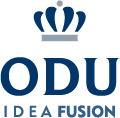Marine bivalves acquire infectious diseases either through
direct contact or by filtering pathogens during feeding. Once acquired, the
progression of infection in the host is mediated by environmental
conditions, the host condition, host defense system, and pathogen
proliferation. Consequently, models developed for disease effects on host
population dynamics must represent this range of individual responses to
infection and relate these to population responses. Also, pathogen
transmission between hosts is an important challenge for understanding how
epizootics wax and wane and how disease influences host population
dynamics. The details of host population processes and pathogen
transmission dynamics are blended in models that evaluate the effects of
natural selection and/or genetic modification in developing disease
resistance in the host population. Application of this type of model to
marine diseases is only now beginning and represents a promising approach
that may provide a mechanistic basis for managing marine diseases and their
host populations. Marine diseases pose additional challenges for the
management of marine resources and mathematical models provide one approach
for quantifying population and environmental effects and addressing the
competing goals of managing the diseased population versus managing the disease.
Eileen Hofmann received a B.S. degree in Biology and M.S. and Ph.D. degrees in Marine Science and Engineering. Her current research interests include marine food webs of Antarctic coastal environments, transmission of marine diseases, and carbon cycling in continental shelf systems.

|
CCPO Innovation Research Park Building I 4111 Monarch Way, 3rd Floor Old Dominion University Norfolk, VA 23508 757-683-4940 |

|